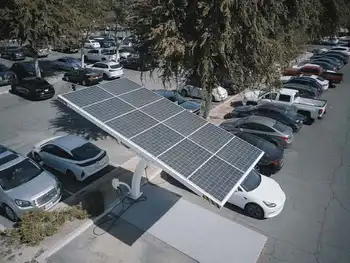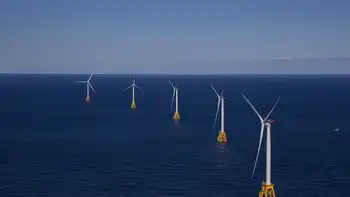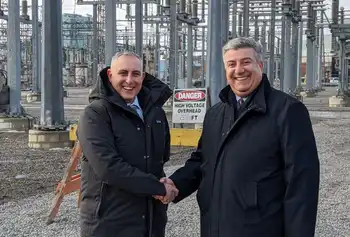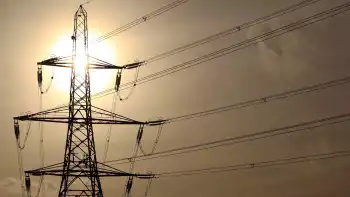$467 million in Recovery Act funding for geothermal, solar
The funding represents a substantial down payment that will help the solar and geothermal industries overcome technical barriers, demonstrate new technologies, and provide support for clean energy jobs for years to come. The announcement supports the Obama AdministrationÂ’s strategy to increase American economic competitiveness, while supporting jobs and moving toward a clean energy economy.
“We have a choice. We can remain the world’s leading importer of oil, or we can become the world’s leading exporter of clean energy,” said President Obama. “We can hand over the jobs of the future to our competitors, or we can confront what they have already recognized as the great opportunity of our time: the nation that leads the world in creating new sources of clean energy will be the nation that leads the 21st century global economy. That’s the nation I want America to be.”
"We have an ambitious agenda to put millions of people to work by investing in clean energy technology like solar and geothermal energy,” Energy Secretary Steven Chu said. "These technologies represent two pieces of a broad energy portfolio that will help us aggressively fight climate change and renew our position as a global leader in clean energy jobs.”
Geothermal energy is a clean source of renewable energy that harnesses heat from the Earth for heating applications and electricity generation; geothermal plants can operate around the clock to provide significant uninterrupted “base load” electricity, or the minimum amount a power utility must provide to its customers.
The Recovery Act makes a $350 million new investment in this technology, dwarfing previous government commitments. Recovery Act funding will support projects in four crucial areas: geothermal demonstration projects; Enhanced Geothermal Systems (EGS) research and development; innovative exploration techniques; and a National Geothermal Data System, Resource Assessment and Classification System.
• Geothermal Demonstration Projects ($140 Million)
Funding will support demonstrations of cutting-edge technologies to advance geothermal energy in new geographic areas, as well as geothermal energy production from oil and natural gas fields, geo-pressured fields, and low to moderate temperature geothermal resources.
• Enhanced Geothermal Systems Technology Research and Development ($80 Million)
Funding will support research of EGS technology to allow geothermal power generation across the country. Conventional geothermal energy systems must be located near easily accessible geothermal water resources, limiting its nationwide use. EGS makes use of available heat resources through engineered reservoirs, which can then be tapped to produce electricity. While the long-term goal of EGS is to generate cost competitive clean electricity, enabling research and development is needed to demonstrate the technologyÂ’s readiness in the near-term.
• Innovative Exploration Techniques ($100 Million)
Funding will support projects that include exploration, siting, drilling, and characterization of a series of exploration wells utilizing innovative exploration techniques. Exploration of geothermal energy resources can carry a high upfront risk. By investing in and validating innovative exploration technologies and methods, DOE can help reduce the level of upfront risk for the private sector, allowing for increased investment and discovery of new geothermal resources.
• National Geothermal Data System, Resource Assessment, and Classification System ($30 Million)
The long-term success of geothermal energy technologies depends upon a detailed characterization of geothermal energy resources nationwide. In 2008, the United States Geological Survey (USGS) conducted an assessment of high temperature resource potential in the Western United States. To fully leverage new low-temperature, geopressured, co-production, and EGS technologies, DOE will support a nationwide assessment of geothermal resources, working through the USGS and other partners.
Second, DOE will support the development of a nationwide data system to make resource data available to academia, researchers, and the private sector. Finally, DOE will support the development of a geothermal resource classification system for use in determining site potential.
Solar energy is a rapidly expanding industry with a double-digit annual growth rate in the United States. DOE is focused on supporting the U.S. industryÂ’s scaling up of manufacturing, production, and distribution so the technology can become cost competitive with conventional sources of energy. DOE will provide $117.6 million in Recovery Act funding to accelerate widespread commercialization of clean solar energy technologies across America. These activities will leverage partnerships that include DOEÂ’s national laboratories, universities, local government, and the private sector, to strengthen the U.S. solar industry and make it a leader in international markets.
• Photovoltaic Technology Development ($51.5 Million)
DOE will expand investment in advanced photovoltaic concepts and high impact technologies, with the aim of making solar energy cost-competitive with conventional sources of electricity and to strengthen the competitiveness and capabilities of domestic manufacturers.
• Solar Energy Deployment ($40.5 Million)
Projects in this area will focus on non-technical barriers to solar energy deployment, including grid connection, market barriers to solar energy adoption in cities, and the shortage of trained solar energy installers. Combined with new technology development, these deployment activities will help clear the path for wider adoption of solar energy in residential, commercial, and municipal environments.
• Concentrating Solar Power Research and Development ($25.6 Million)
This work will focus on improving the reliability of concentrating solar power technologies and enhancing the capabilities of DOE National Laboratories to provide test and evaluation support to the solar industry.
Related News

Ontario to seek new wind, solar power to help ease coming electricity supply crunch
TORONTO - Ontario is working toward filling all of the province’s quickly growing electricity needs with emissions-free sources, including a plan to secure new renewable generation, but isn’t quite ready to commit to a moratorium on natural gas.
Energy Minister Todd Smith announced Monday a strategy to prepare the grid for 2030 to 2050 — the Independent Electricity System Operator projects Ontario’s electricity demand could double by mid-century — and next steps involve looking for new wind, solar and hydroelectric power.
“While we may not need to start building today, government and those in the energy sector need to start planning immediately,…




